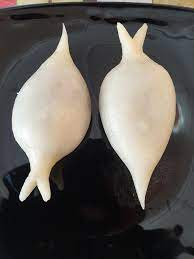Fimala Digital Media
Located 32 kilometers southeast of the center of the
Kathmandu Valley, Panauti is an ancient city known for tangible and intangible
cultural wealth. The architectural complex at Panauti in the holy confluence of
Roshi river and Punyamati river in an idyllic location has been included by
UNESCO in its tentative list of World Heritage Areas.
Spread over a small area of one square kilometer, there are more than 40
temples and historical structures around the ancient manhood. Built in the
traditional Newar architectural style, the Indreshwar Mahadev Temple was built
in 1294. Other notable temples are the 17th-century Brahmayani Temple and the
Krishna Temple at Triveni Ghat. There are also monasteries of archaeological
importance, inscriptions, and stone sculptures, as well as half a dozen stupas
including Buddhist chaityas and community houses with idols of deities. The
city of rich cultural wealth has spacious public shelters in public squares.
The Unmukta Bhairav Temple and the Ahilya Temple are excellent examples of the
Newari style of architecture.
The Hindu gods like Mahadeva and Indra are found in Hindu mythology about the
solitude they performed in Panauti to cleanse themselves from the sins they
committed. These stories are linked to Panauti Trivenighat, the meeting place
of the three rivers of Panauti. Two of the three rivers are Punyamata and Roshi
are visible, while the other holy river Lilavati is invisible. The Panauti
Makar Mela, which lasts for a month once in 12 years, attracts pilgrims from
far and wide to Panauti. Taking a holy bath in Panauti Triveni has been a
public belief to wash the sins of the pilgrim.
Yomari, a famous dress of the Newar community, is believed to have been
invented in Panauti. The festival of Yomari is believed to have begun with
Panauti. According to legend, a married couple Suchandra and Kriti are believed
to have invented Yomari. Yomari's new flavor was spread to the residents. The
name of this bread was Yomari, which can be called the favorite bread when
given the real meaning in the local language. It is the public belief that
Kuber, the god of wealth, was offered Yomiuri. Kubera was very happy with the
taste of Yomari and with the blessings of Kuber, the tradition of celebrating
Yomari again began. Yomari is again the auspicious festival of Newars
celebrated on the last day of harvesting paddy. This festival is celebrated on
the full moon day of the month of Thinla of Nepal Samvat. Yomari has become a
special part of the menu of restaurants that find Achel Newar Parikar. Yomari
and Yomari Pun Feast may be a powerful proposal to include UNESCO's World
Heritage in Intangible Wealth. Until recently, the Government of Nepal has not
placed intangible assets on UNESCO's World Heritage List.
More than one hundred intangible cultural heritages of Panauti are involved in
festivals and celebrations celebrated throughout the year. It is not an
exaggeration to say that every day is Heritage Day in Panauti. The collective
efforts of the Department of Archeology, Panauti Municipality, and civil
society in preserving Panauti's heritage and cultural heritage are commendable.
 Panauti is considered a holy city by both Hindus and Buddhists. Panauti is
believed to be the Panchal city of the Mahabharata era where Princess Draupadi,
who married five Pandava brothers, was born. There is a strong possibility of
redefining Panauti as a major location of the Mahabharata circuit. There are
many statues of Pandavas along with Draupadi in Nepal and India. But there is
only one idol of Draupadi in Khopasi bazar of Panauti municipality. Perhaps
this is the only statue of Draupadi with archaeological value in the world.
Panauti is considered a holy city by both Hindus and Buddhists. Panauti is
believed to be the Panchal city of the Mahabharata era where Princess Draupadi,
who married five Pandava brothers, was born. There is a strong possibility of
redefining Panauti as a major location of the Mahabharata circuit. There are
many statues of Pandavas along with Draupadi in Nepal and India. But there is
only one idol of Draupadi in Khopasi bazar of Panauti municipality. Perhaps
this is the only statue of Draupadi with archaeological value in the world.Panauti is also the birthplace of Prince Mahasattva, a holy soul of Buddhist
philosophy. Prince Mahasattva is known as Namobuddha. According to legend,
Prince Mahasattva offered his own flesh to the starving tigress, who was
surrounded by her newly born cubs. Prince Mahasattva who attained Buddhahood is
called an incarnation of Buddha. Namobuddha, the place where Mahasattva's
remains are kept, is a sacred pilgrimage site for both Hindus and Buddhists.
Namobuddha is located on the eastern side of the hill near Panautin. Namobuddha
can be considered as a rightful recipient of world heritage recognition with a
separate identity.
As the ancient human settlement of Panauti stands on the same rock, the use of
dhikki and okhal is prohibited here. Earthquakes are not felt here. The great
earthquakes of 1934 and 2015 caused 20,000 and 10,000 human casualties in large
parts of Nepal respectively, but the damage in Panauti remained negligible.
Having a tradition of many fairs and fairs, Panauti is actually a living museum
where cultural and traditional values are kept intact.
Although the Early Medieval Monuments of Panauti have been included in the
provisional list of UNESCO World Heritage Sites since May 23, 1996, Panauti has
not been included in the World Heritage List. Local intellectuals and social
workers, including Panauti municipality, are constantly trying to make Panauti
recognized as a world heritage site.
(vidhukayastha@gmail.com)





.jpg)
